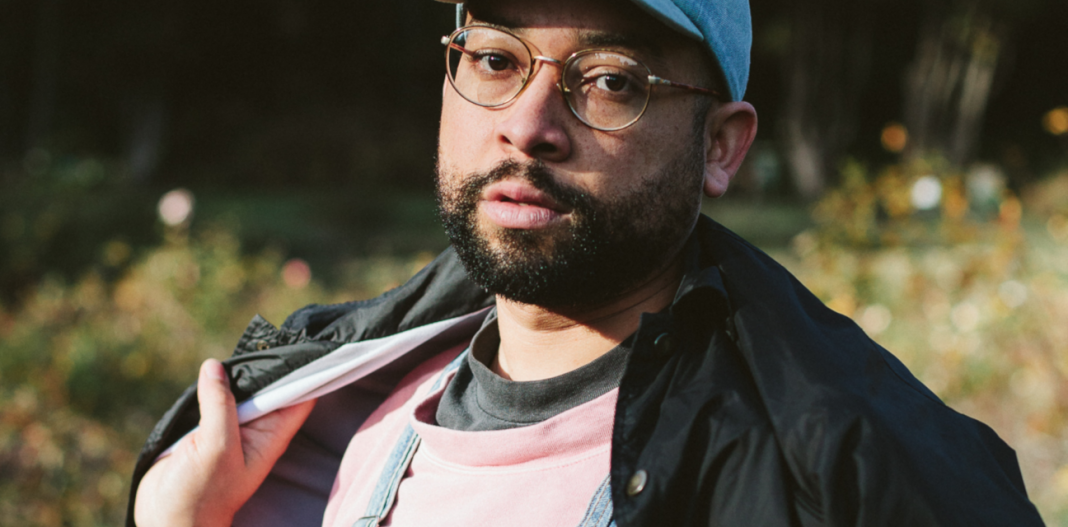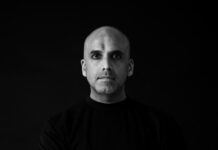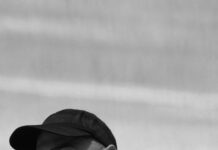Photo: Press (Russell E.L. Butler)
There is something special about Russell E.L. Butler’s music and it can be hard to describe exactly what. Maybe it is Butler’s use of modular synthesizer, something that can give their approach to house a raw touch, but will also make their productions on labels like Opal Tapes, Jacktone and recently CGI sound lush and warm at the same time. Ahead of the release of The Home I’d Build for Myself and All of My Friends, the Oakland-based producer’s debut LP for Left-Hand Path, Butler’s contribution to our Groove podcast creates a narrative that draws on similar parameters – but sounds as special as anything else in Butler’s discography.
You’ve cited the work of sound artist Jessica Rylan as an inspiration, especially her work with modular synthesizers. What drew you to her art and which role does modular synthesis play in your work?
Jessica was very involved in the experimental music scene while I was going to college in Boston. She was the first person I saw use a modular synthesizer. Modular synthesizers were usually so inaccessible and esoteric, especially in 2006, and seeing someone play one, that they custom built, live, at a basement show, was pretty compelling. Jessica would also go on to be a research fellow at the Media Lab at MIT where she gave this talk, which was very influential for me – keep an eye on the audience for someone with tiny little dreads.
Currently based in California, you are originally from Bermuda and also mention the island’s cultural history as an influence on your work. How does this and the diasporic experience inform your work as an artist?
My experiences have resulted in a fractured identity. I still have a life in my home country, but the center of my day to day is over 3,000 miles away in California. My work tries to make these disparate parts work together. I’m documenting my experience, while analyzing it and trying to learn from it. This serves to heal my struggles with balancing these identities and the restrictions and responsibilities that come with them.
Before releasing under the name Russell E.L. Butler, you’ve used the pseudonym Black Jeans. Why did you retire this project?
I wanted to focus on developing as a producer and an engineer without having the pressure of having to sing. I find recording vocals really difficult and arduous and needed some time to find my voice in this music. I’ve started doing vocals in live sets again and am feeling ready to put the workinto writing and performing these songs again. Next year will be the 10th anniversary of me starting that project, so I may commerorate that in some way.
Your forthcoming LP The Home I’d Build for Myself and All of My Friends will, in your own words, attempt to “set out an idealistic space for the community, a space to dream in this frantic, late capitalist system, and feel what freedom and transcendence would be like”. How did you translate these ideas on a musical level?
I focused on designing each sound, so that my body would, physically, feel the presence of the sounds. I focused on frequencies rather than semitones. Sounds can invoke specific feelings at certain frequencies so this approach allowed me to work with more precision. I usually make tracks in small groups of two or three which creates a new challenge, as this album was recorded in bursts over the course of 18 months. I had to focus on the recording medium having a similar feel across tracks. All of the tracks are recorded in one or two takes to one stereo channel. Some of them were recorded with a Zoom H4N, some with cassette, all of them were transferred to the same cassette, and bounced into Logic with a Fireface UFC. The cassette isn’t driven too hard, it mostly functions as short room reverb or saturated color. I want it to feel like the tracks are a physical presence in your space, like an ethereal entity. This medium aids that aim. Mark Pistel did a great job mastering the project ensuring that this record comes off as a compelling work and not a bedroom project. Each track feels weird, off in a way, but intentional. This intention draws you into the world that the record projects or inhabits.
Your contribution to our Groove podcast draws on classic, jacking house and some more recent, techno-leaning productions. Which concept did you have in mind for it?
Mixes are an opportunity for me to share my little weird archive with you. I like telling stories, sharing my friends’ work, uplift, pull down, show you where I’m at in life, based on where we’ve been as artists and listeners, and where we might be headed. The unknown jack track in the middle of the mix uses the same vocal track as the closing track, “San Francisco” by Tasti Box, an early 90s San Francisco live hardware rave group. The sample “This is the time of renewal” is an echo throughout rave history, calling us to create ourselves again. The closing track also features problematic tripper Timothy Leary invoking the culture at that time, idealistic, naive, but maybe possible. This is also one of my first and most reliable dollar bin finds, every track is excellent.
Last but not least: Where can we see you or behind the decks or live in the near future, and what are your plans as a producer?
I’ll be playing at the second rite of the Mother Beat in Seattle on August 18th, then a live set for the Brouhaha party at f8 in San Francisco, with emerging DJ Sinéad and one of my all time faves, Bambounou.
Stream: Russell E.L. Butler – Groove Podcast 173
01. Daisuke Kondo – Not Too Late
02. Lil Louis and the World – Music Saved My Life (Masters at Work remix)
03. Worldwide Tribe – Lemme Hear You Stomp
04. Soichi Terada – Rising Sun Up
05. M1 – Reach For The Stars
06. Romanthony – Trust (Ghost Mix)
07. House Syndicate – Jam The Mace
08. Unknown Jack Track
09. Jay Daniel – Bubble Cougar
10. Factory Floor – Turn It Up
11. Club Lonely – Zone 1 remix
12. 1800HaightStreet – Permafrost
13. Fugal – Parallels
14. Daniel Avery – Radius (Surgeon remix)
15. Tasti Box – San Francisco





